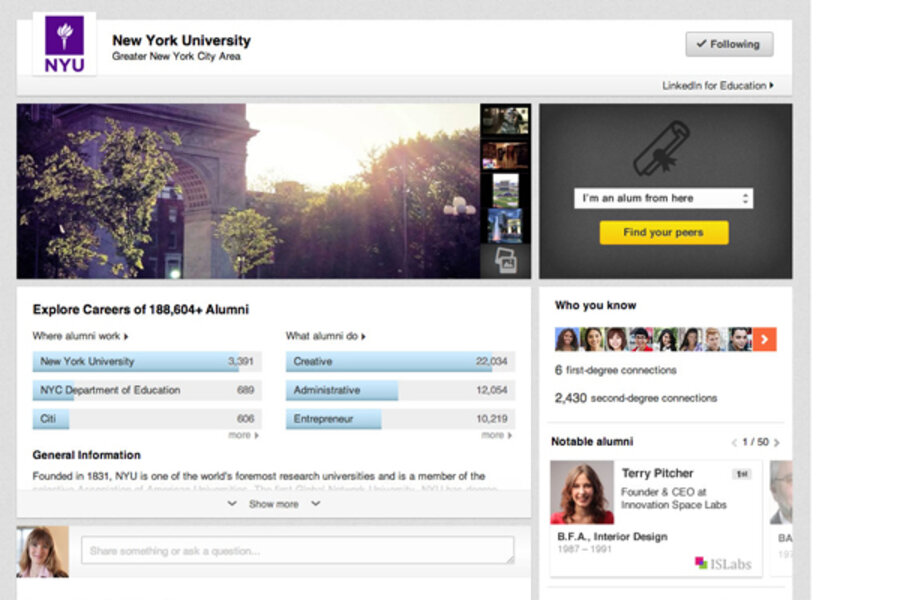LinkedIn targets college-bound high schoolers
Loading...
US News and World Reports is the canon of college ranking, and Princeton Review’s list isn’t far behind. College visits give students a snapshot of what to expect when they enroll. But one overnight trip and a list of statistics hardly tell a college’s whole story.
Enter LinkedIn.
The professional networking site introduced a new feature to fill this void: LinkedIn University Pages.
The Director of Project Management for LinkedIn, Christina Allen says she thought up the idea of LinkedIn for high schoolers when she was going through the college search with her own daughter.
Ms. Allen had watched her daughter and her friends struggle to make decisions about what college they should attend when she realized that for the most part, “they were flying blind,” especially if they didn’t have experienced family or friends to help out, writes Allen in a blog post on the LinkedIn website.
And that’s where Allen saw that LinkedIn could play a role. Instead of piecing together impressions, statistics and leaflets about a college, LinkedIn would be a “one-stop-shop” with a treasure trove of information for students.
The new University Pages feature lets prospective students see what the institution’s alumni are up to, figure out what classes are available to different majors and get regular updates from universities about what is going on. The new feature will launch Sept. 12. Some 200 universities worldwide have adopted their pages, including New York University, University of California San Diego, and Villanova, according to the LinkedIn website.
LinkedIn currently has more than 200 million members worldwide. Letting younger students join the network will help LinkedIn gather – and, it hopes, retain – more members during their transitions through high school and eventually to the job market.






